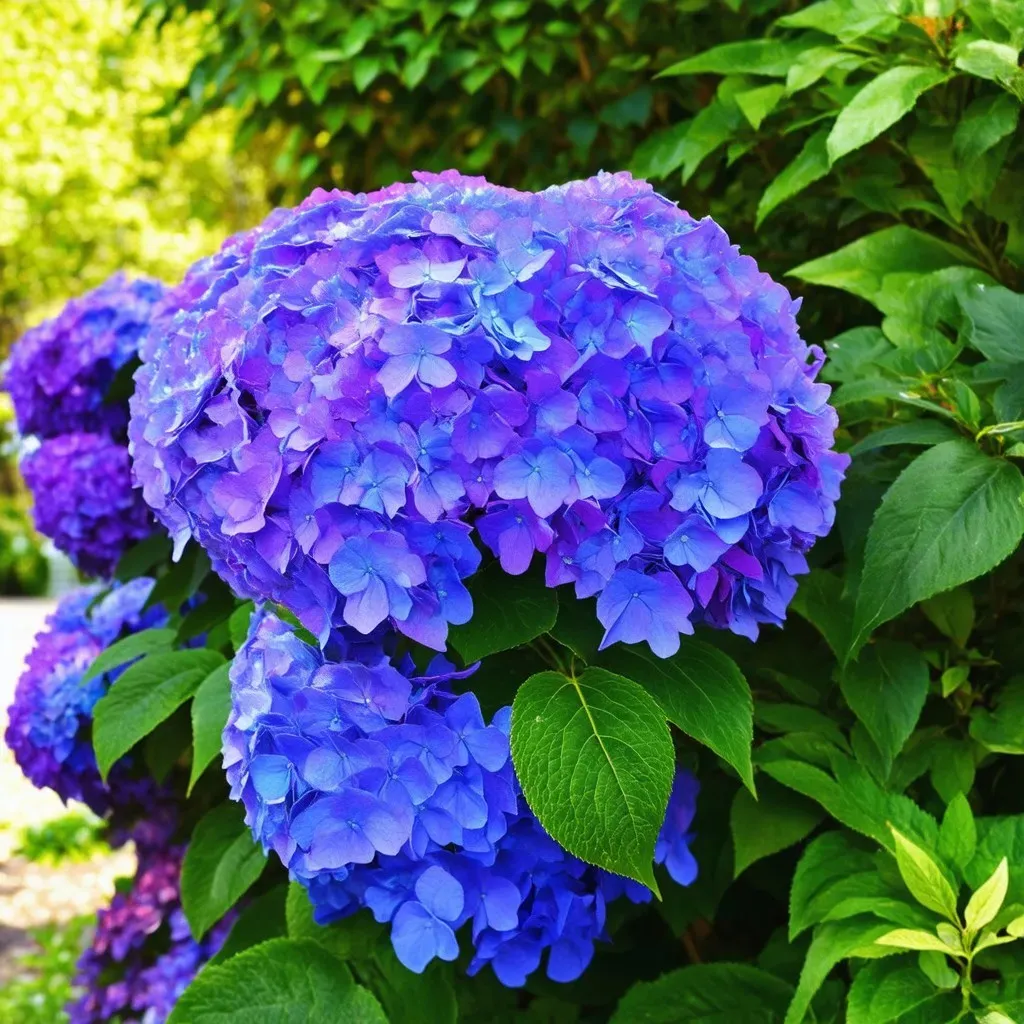Purple hydrangea-colors-blooms/unlock-the-secret-to-stunning-blue-hydrangeas-a-comprehensive-guide/">blue hydrangeas are among the most enchanting flowers that can enrich your garden landscape. With their stunning shades of blue and purple, these hydrangeas offer a charming presence, creating a visual spectacle that delights every gardening enthusiast. Whether you’re looking to add color to your backyard or want to impress guests with vibrant blooms, understanding these beauties is essential.
Understanding Purple Blue Hydrangeas
Hydrangeas, scientifically classified under the genus Hydrangea, comprise various species and varieties, each with unique colorations, sizes, and growth habits. The colors of hydrangeas, particularly blue and purple shades, are heavily influenced by soil pH. This means that the same plant can produce flowers of different colors depending on the soil’s acidity or alkalinity.
For the vivid blue hues, a soil pH of 5.5 or lower is ideal, while purple varieties thrive in soils with pH levels between 5.5 and 6.5. Neutral to alkaline soils will lead to pink blooms. This adaptability makes hydrangeas fascinating and a favorite among many gardeners who enjoy experimenting with their growth conditions.
Key Facts About Hydrangeas
| Fact | Description |
|---|---|
| Scientific Name | hydrangea macrophylla |
| Plant Hardiness Zones | 3-9 (depending on the variety) |
| Blooming Season | Late spring to fall |
| Preferred Soil Type | Well-draining, moisture-retentive, rich in organic matter |
| Ideal Soil pH | Blue blooms: pH < 5.5; Purple blooms: pH 5.5 – 6.5 |
Types of Purple Blue Hydrangeas
1. Bigleaf Hydrangea (Hydrangea macrophylla)
Bigleaf hydrangeas are known for their large blooms and versatility in color, ranging from deep blue to pink depending on soil conditions. Their unique trait is that the flowers can change color from season to season.
2. Lacecap Hydrangea
Lacecap hydrangeas sport a flat head of flowers, giving a lovely contrast with the surrounding plants. The blooms can be blue, purple, or pink, depending on the soil pH levels, which allows for a beautiful, multicolored display.
3. Oakleaf Hydrangea (Hydrangea quercifolia)
Unlike the common bigleaf varieties, oakleaf hydrangeas offer lobed leaves resembling oak trees and are often found in shades of white to pink that transition through to purple. They are ideal for mixed border plantings.
Reference Video
Tips for Growing Purple Blue Hydrangeas
Soil Preparation
Creating the right soil conditions is key to achieving stunning blooms. Here’s how you can ensure your hydrangeas thrive:
-
Test Soil pH: You can use home pH testing kits to measure acidity or alkalinity. Adjust accordingly using sulfur (to lower pH) or lime (to raise pH).
-
Fertility: Add compost or well-rotted manure to improve soil structure and nutrient supply. Hydrangeas thrive in nutrient-rich environments.
Watering
Hydrangeas need consistent moisture to prevent wilting, especially in dry periods. Water them deeply once a week, ensuring the soil stays moist but not saturated.
Mulching
Use organic mulch around the base of your hydrangeas to retain soil moisture and suppress weeds. Mulch also helps maintain a consistent temperature in the soil.
Pruning
Pruning is essential to ensure that your hydrangeas grow vigorously and produce high-quality blooms. For bigleaf varieties, prune in the early spring before new growth begins.
Fertilizing
Use a balanced fertilizer in early spring as new growth emerges. This can include slow-release fertilizers or granular options, ensuring your hydrangeas have the nutrients needed for flowering.
Frequently Asked Questions
Q: How can I ensure my hydrangeas bloom purple?
A: To achieve purple blooms, maintain a soil pH between 5.5 and 6.5. Regularly test and amend the soil with appropriate additives to stabilize pH levels.
Q: When is the best time to plant hydrangeas?
A: Early spring or fall are the best times to plant hydrangeas. This timing allows plants to establish roots before the harsher summer heat or the freezing winter conditions.
Q: How often should I water hydrangeas?
A: Water hydrangeas at least once a week, ensuring the soil remains consistently moist but not soggy. More frequent watering may be required during hotter periods.
Q: Can hydrangeas grow in shade?
A: While most hydrangeas prefer partial to full sunlight (about four to six hours), they can adapt to shadier conditions. However, blooming may be affected, resulting in fewer flowers.
Notable Varieties of Purple and Blue Hydrangeas
| Variety Name | Description |
|---|---|
| “Endless Summer” | This bigleaf variety showcases blue and pink hues throughout the summer, providing continuous blooms. |
| “Twist-n-Shout” | A lacecap hydrangea known for its charming blooms and sturdy growth, often displaying vibrant colors. |
| “Let’s Dance Blue Jangles” | A compact variety that produces prolific blue blooms, perfect for smaller garden spaces. |
Conclusion
Understanding the intricacies of growing purple blue hydrangeas can unlock a world of colorful possibilities in your garden. With the right soil conditions, adequate care, and a willingness to experiment, you can experience the joy of nurturing these captivating flowers. Check out more insights on growing hydrangeas at Better Homes & Gardens.

In essence, purple blue hydrangeas are not just flowers; they represent a unique blend of nature’s palette that can transform any space into a vibrant oasis.


